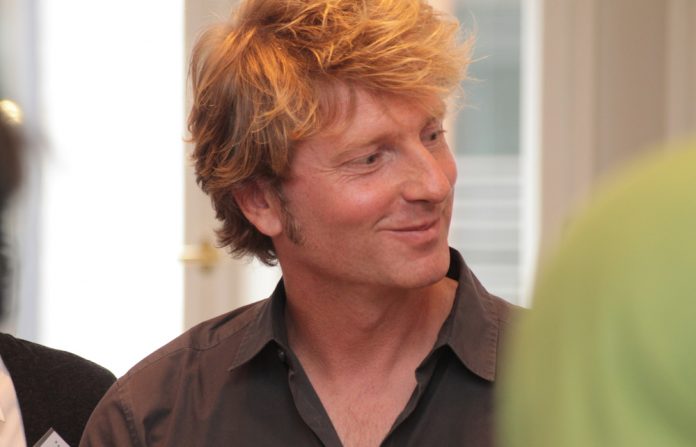
Creative industries policy and its search for meaning
— Eric Poettschacher in an interview with Hansjürgen Schmölzer
The creative industries are in vogue, and are rising high hopes for the future. Countless support initiatives have been established with the goal of creating a large number of new jobs in this segment in mind. These usually aim to enable innovative start-up ideas to develop into industrially scalable, “business as usual” concepts. But are these economic aspirations at all congruent with the global values and social reality of these so-called “creatives”? Eric Poettschacher compares the dominant economic paradigms with entirely different perspectives on the creatives, which can engender an “added value” for society that goes far beyond the economic dimension.
You have been working as a consultant in the creative industries field for many years. Can this sector really live up to the economic hopes that have been invested in it?
I have become very critical of the hype and the expectations associated with it. If you take a closer look, you can see that the goals behind the policy of promoting these industries, the environmental realities and the aspirations of the creatives are not necessarily compatible. Naturally, the politicians hope that through the creative industries, employment will be created and economic locations will be strengthened. Currently, many people are looking to Silicon Valley and thinking: that’s what I want, too. Sexy start-ups, which conquer a global market with their products. This approach is in line with an industrial paradigm that is now the subject of greater criticism than ever before. In this logic, scalable ideas are needed, in order to be able to grow as quickly as possible. All this occurs on the assumption that endless growth is possible and that there are no limits to resources. That might have been true when Adam Smith was alive, but today, economic activity is conducted under different conditions. If you are willing to acknowledge them. But let’s return to the creatives. Tech companies naturally found it easy to become a synonym for creativity and innovation. They are the easiest to standardise and scale. I remember one venture capitalist in Silicon Valley who got the heart of the matter very nicely. He wanted to talk only about innovations that can be multiplied millions of times over at the touch of a button. And then he added: please, nothing that involves people. People have moods, get ill and are unpredictable. However, this way of thinking only represents a small proportion of a sector that we now refer to in general terms as the creative industries. While tech start-ups currently attract the greatest level of attention, there are very different – and in my opinion, more contemporary – business models which do not focus on unending rigid growth without any specific purpose, and which are successful precisely because of this. These companies consciously operate more slowly and sustainably. Sometimes they grow, and then they shrink back again. However, this no longer makes them the job and growth machine that economic policymakers would like to see, at a time when they are still searching for the magic formula that will enable them to produce unicorns en masse. That’s why I can’t go along with this hip-hip hooray attitude and the propaganda that constantly stresses that the creative industries are our greatest hope for the future. Are we talking here about sustainably innovative business models that we urgently need, because “business as usual” has no future? Or is it all about more of the same – packaged as aesthetic, sustainable consumerism – so that we can simply carry on as before?
But new jobs really are being created in this field.
That is correct. It has been proven that employment levels are increasing. But the monitoring reports also show that in this sector, the gross turnover and gross value added frequently also decrease for each employee at the same time. More people produce and earn less. Here, euphoria and facts stand diametrically opposed to each other. In our current gold-digger atmosphere, it’s almost impossible to mention this without being branded a killjoy.
Even so, this segment is currently attracting a huge number of people.
Of course it is. This sector is presented in a very attractive way. Different age groups connect different expectations with it. Some want to break out of their old organisations and reinvent themselves. Others see the creative industries as a Mecca for professional fulfilment. And they are then also prepared to allow themselves to be exploited for this. The burn-out rate in the gaming industry is shockingly high; even managers from the old economy weren’t subjected to this level of stress.
There currently appears to be a willingness to invest quite a large amount of money in support of this field.
This is certainly the case. Between Ecuador and Siberia, there’s hardly anywhere that does not have creative industry clusters. In the interim, many projects have been developed specifically with the question in mind: will I get funding for this activity? Yes, this field is probably being given more money than ever before. I would like to see facts and figures as to what became of the funded projects five years later. These statistics are almost non-existent, however.
Do we have the wrong funding programmes?
I can’t and don’t want to give a general answer to that question. All I can say is that now, I make a big difference between innovations that do nothing more than bring new products onto the market and those that make people or entire markets think again about consumption and lifestyles.
What contribution of substance can creatives make to society?
Creatives not only design products, but also make decisions about materials, sales strategies and the messages that a product transmits to the world. With their work, they determine which lifestyles are cool and which are not. To this extent, they can be a role model for other industries and sectors, not just through their products, but also through their way of behaving. However, to do so, it’s not enough to keep up the pretty, superficial appearance and conform to stereotypes. Creatives are needed who make public their own dilemma in the area of conflict between money and meaning, and who communicate what it really means in practice to remain true to your own values and despite this, be professionally successful. I’d simply say now that this is on the mind of almost every working person in one way or another. Here, we can learn a lot from the creative industries, because there, the purpose is not always to maximise profit. There, valuable social capital is created every day, which can’t immediately be converted into monetary values. Creatives are experts when it comes to researching “business NOT as usual” practices. I’ve now been working in the creative industries for more than 22 years, and this is the most fascinating aspect of them.
Can you give some examples of “business not as usual” models?
Take Patagonia, for example. They mainly make outdoor clothing. But instead of aiming solely to ensure that their customers buy new products from them as quickly and frequently as possible, they offer to repair an item of clothing if necessary, even if it has already been worn for a longer period of time. Naturally, this also creates a very different relationship between the company and its customers. Its customers are willing to pay more for long-lasting quality. While other fashion companies generate their added value in “fast fashion mode”, in other words, constantly bringing new, cheap items onto the market designed to replace the old ones, Patagonia does just the opposite. This leads to changes in attitude and imitators. But there are so many other interesting market experiments: supermarkets without packaging, for example, or food courts that give a visual display of the environmental footprint and the journey taken by fruit and vegetables at the point of purchase. Due to the power that the large chains wield on the markets, such ideas can naturally only act as incentives at present. But these concepts pick up on extremely important issues in terms of how we redesign our economy in the long term. Creatives are good at designing lifestyles. Here, funding initiatives can help to promote alternative lifestyles – even if this is not what the mainstream wants.
Until now, the main principle has been that economic success is cool.
I know so many people from the creative industries who take a very differentiated view of their success. A successful start-up entrepreneur in Berlin, who now has several hundred staff, once told me: “I didn’t want this at all. I never wanted to become so big. Now, I’m nothing more than an administrator in my own company. That was never what I wanted to achieve.” This naturally also reflects a far more substantial issue than the more overtly visible one as to whether I can generate economic success with my idea. The point is whether my own company has grown in the way that I myself wanted it to, or whether it has done so in a way that other people have decided for me. There are people who make a few bottles of excellent Gruner Veltliner wine every year. And they have no interest in producing any more, even though they would be able to sell many more of them. They also don’t usually need external funding. People like that have their goals very clearly in focus.
That naturally also takes us to the fundamental question: how is money connected to meaning in the first place? During the course of your work for the company you yourself founded together with an investor from Boston, shapeshifters, you have been intensively involved in thinking about this question for several years.
With the investor, I founded a limited liability company. It took me a long time to understand what her motivation was as a “business angel” – aside from the purely monetary aspect. It only became clear to me much later that there can an endless number of motivation factors when making an investment, and that there is not only a monetary return on investment, but also a “return on meaning”. Since then, I’ve been thinking about the reasons why people invest in creatives. And there are many interesting examples here. A short time ago, I got to know an artists’ collective consisting of 30 people. In terms of their way of working, they are a radical antithesis to every structured innovation process: they are in sole pursuit of their passion and are looking for ways and opportunities for realising it that emerge of their own accord, as it were. Probably, that’s exactly why an author and producer of world renown invested in them; he shared their passion.
However, at the same time, the question arises as to the impact on the collective itself when suddenly so much money appears on the table. Isn’t it the case that a lot of money can also destroy the creativity of this collective?
You’re now addressing the organisation developer in me, of course. Yes, it’s true. As long as no money is involved, other currencies are valid. The thing that is exchanged and multiplied here is social capital within the group. That changes immediately when outside investment is introduced to this social system. This leads to very interesting processes. Then, questions suddenly arise that never used to be important. How much is my work here actually worth? What is the exchange rate between the social capital that has been brought in and the financial capital?
And how much is given to whom? Are money and creativity actually natural-born enemies?
Good question
about the interlocoutor
Eric Poettschacher has worked as a self-employed communications and organisation consultant since 1994, with a focus on the cultural and creative industries and on the knowledge economy. The consultancy model developed by him, “Money & Meaning”, was used, for example, by NESTA (National Endowment for Science, Technology and Arts) for the Creative Pioneer Programme in London. He completed his systemic organisation development training at the Beratergruppe Neuwaldegg consultancy group. From 2013 to 2016, he was managing associate of Shapeshifters, a global correspondent network for the creative industries.











